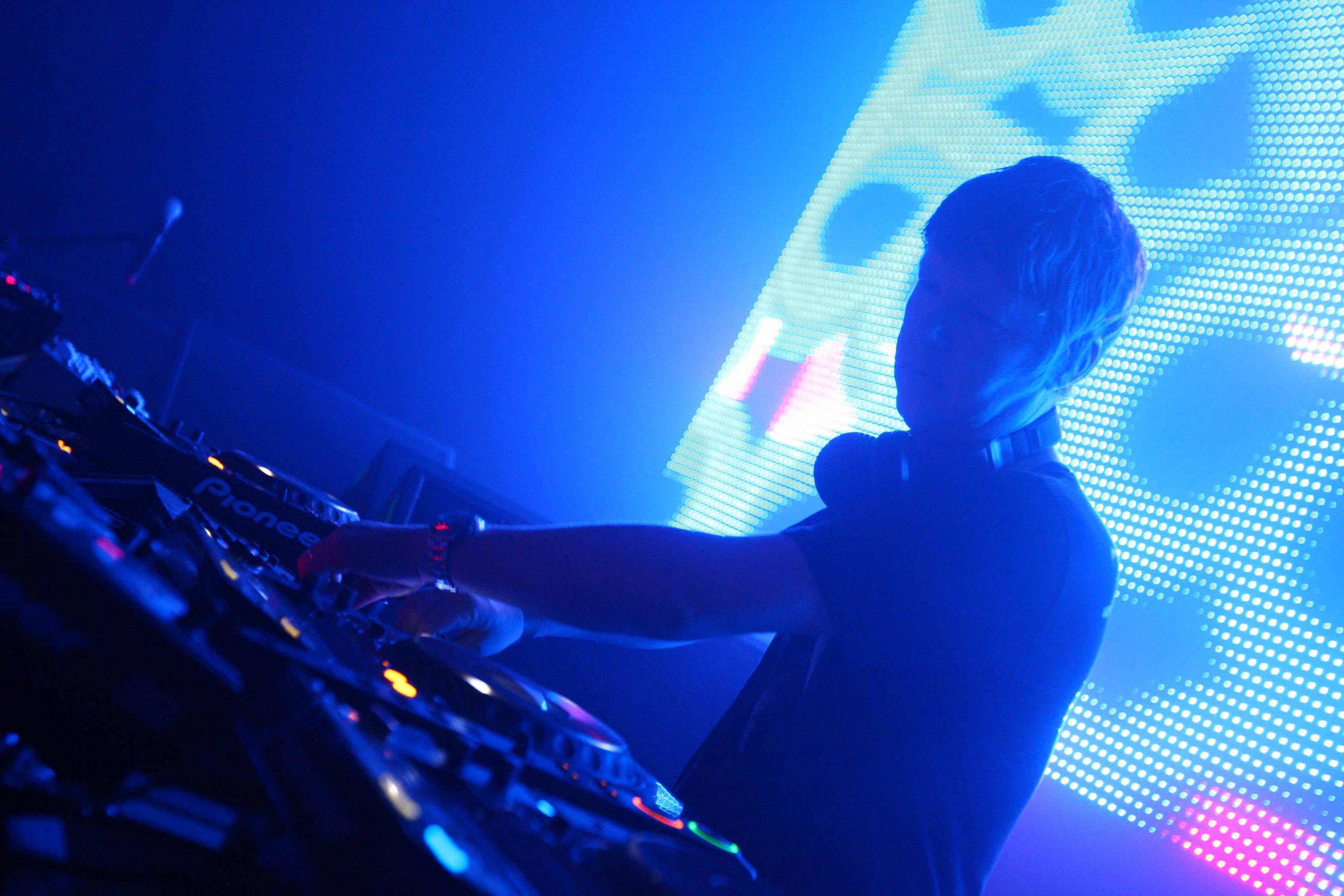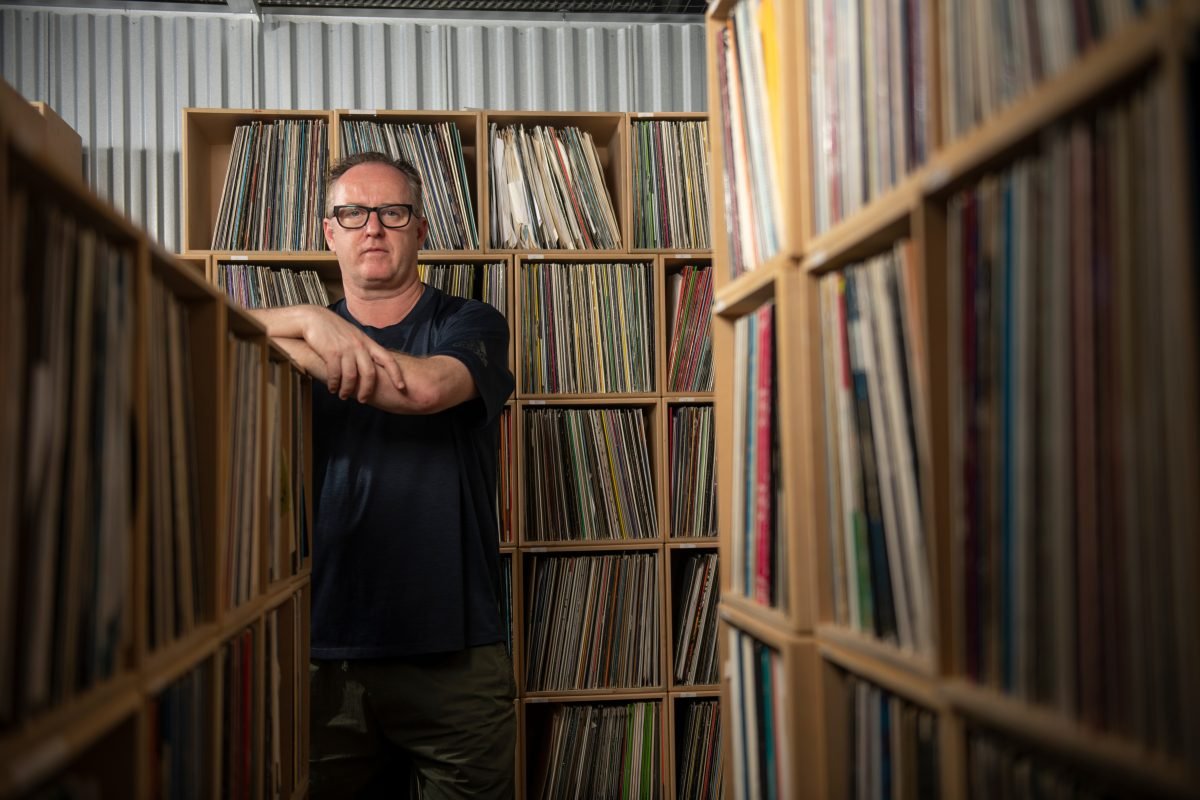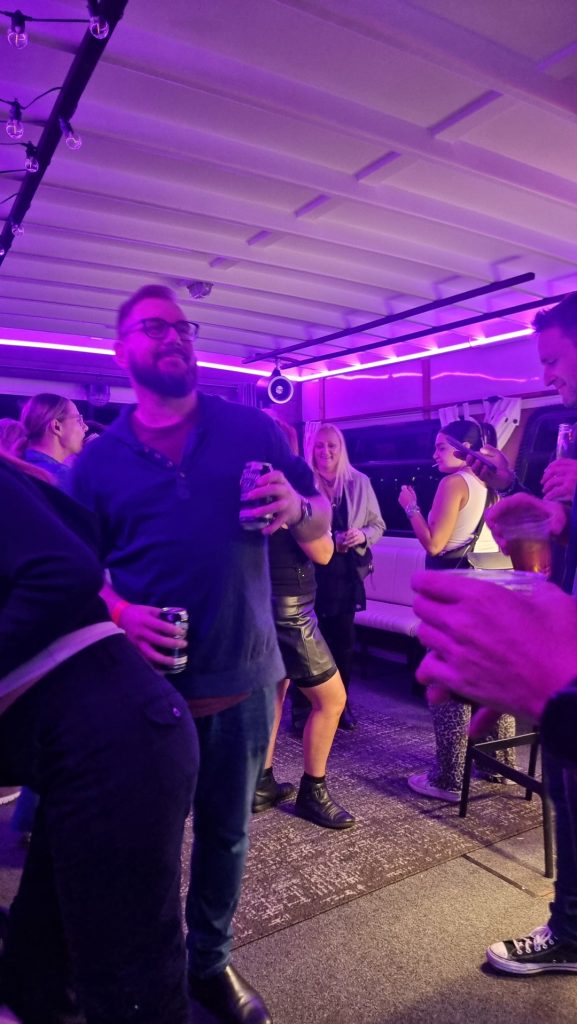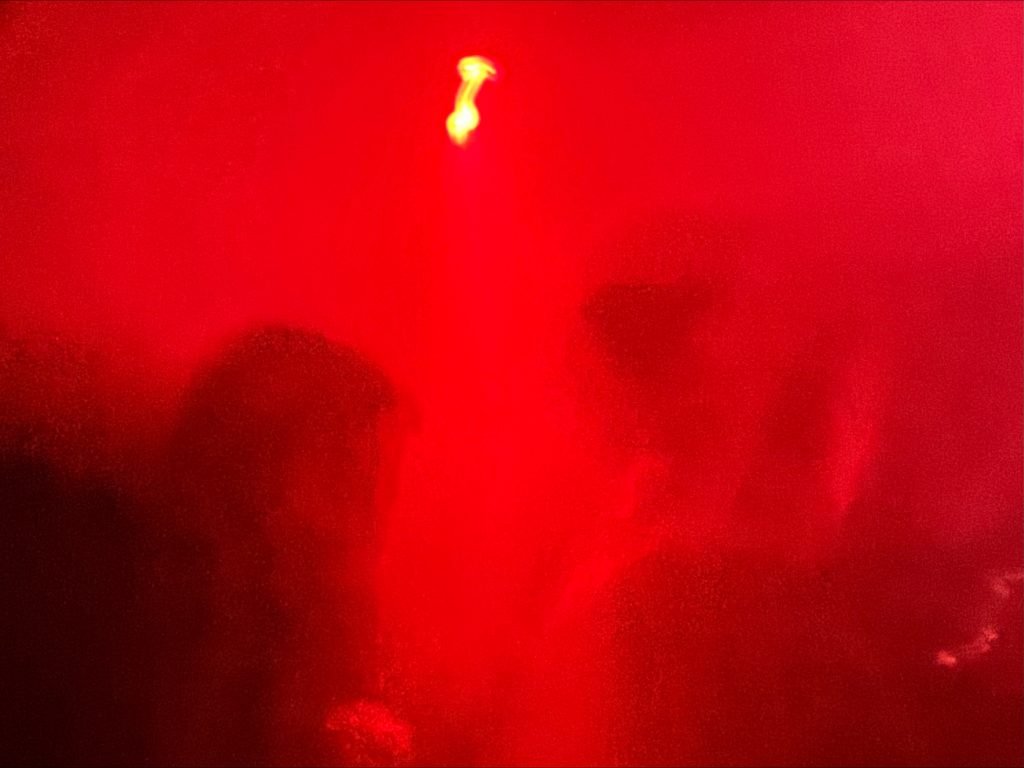
A question I get asked on a regular basis is what IS progressive house? Well, it started like this… It’s 1992 and journalist Dom Phillips is out with his mates when he chances upon a DJ playing a type of music he is unfamiliar with. “I remember vividly that night I went out with friends in Bristol where we first heard what came to be called progressive house.” He recalls, “I remember how exciting the sound was. It was a good time for music – very creative, original people doing stuff because they wanted to, not because they thought it would enhance their DJ fees.” A month or two after he wrote ‘Trance Mission‘ for Mixmag, waxing lyrical about a new form of house music coming from British shores. “Things are changing.” He says, “There’s a new breed of hard but tuneful, banging but thoughtful, uplifting and trancey British house that, while most at home with the trendier Balearic crowd, is just as capable of entrancing up a rave crowd. Once again, it’s possible to go out and hear mad but melodic music that makes you want to dance. Progressive House we’ll call it. It’s simple, it’s funky, it’s driving, and it could only be British” And so it was born.
Seminal labels like William Orbits’ Guerrilla Records, Deconstruction, Soma and Hooj Choons paved the way for a more melodic antithesis to the acid house and techno of Detroit and post-disco-inspired house coming from Chicago. Often interchangeable with the early trance scene, progressive house had elements of dub reggae, deep house and Italo house. Typically, prog house tracks were powerful upbeat records of soaring pianos, and devilishly heavy bass lines, and were longer than the regular US-inspired vocal garage tracks. DJs playing progressive house could adopt a more fluid style of mixing from track to track. Club nights such as Renaissance in Mansfield and Shelley’s in Stoke saved Northern clubbing from the dwindling happy hardcore scene with the introduction of the very UK-based sound.
Lee Softley of original prog housers, Blue Amazon fondly recalls those halcyon days… “It gave the UK its own identity in terms of club music,” He reminisces, “…something that was uniquely our own. Other than the rave scene, the club/house side of things was mainly imported into the UK…this was our own house music!” Ally Mac (Public Domain/Discoworx) takes up the story, “In Scotland, the major dance venues, were almost exclusively 140 bpm. A lull had crept in for House music lovers, whereby there were no real venues or events that were led by house music in its truest sense. The teens were installing CD players at an alarming rate in their Ford Escort XR3i’s….and the music soundtrack could only be described as “bangin’”!
He continues “Scotland’s main dance promoters and all round good guys of house music; Streetrave, alongside other periphery, were stunned at the public backlash, because of the deaths at the legendary Hanger 13 (Pavillion). For me, happy hardcore created a void of former clubbers left “hanging” (see what I did there) with no real outlet for the house crew to party without persecution of legalities. Putting on an event was scary; Police requirements, Council requirements, security levels, first aid etc…made it almost impossible. House music basically was dead up North…..No one took the chance to lay on an event based on house music because the kids were all trousered up with 140 bpm. The crews of clubbers who had experienced House music together in the late eighties and early nineties had to focus on their careers and relationships.”
“What changed the clubbing landscape in Scotland post-1994? 2 words…. well, 4 words really…… “Northern Exposure” accompanied by “Sasha & Digweed”. Streetrave, reincarnated as Colours, had formed a strong relationship with the two whippersnapper DJs and if I recall correctly, had previously given them their first-ever gigs in Scotland too. When Ricky announced the Northern Exposure Tour was coming to the Arches, a massive sigh of relief swept over Scotland. In my book, it was the most anticipated gig for moons. Progressive house was the buzzword. The soundtrack in cars had changed; to be a cool kid you banged in a Global Underground CD. To chill out, you stuck in a Cafe Del Mar CD (basically Progressive House at 100bpm) House music was simply Progressive House, without the “progressive” in its moniker” he says and continues.
“The mid 20’s clubbers had something to call their own again, the sophisticated, evolving soundtrack had risen to the fore, and had kicked happy hardcore well and truly in the nut sack! Going out clubbing again at 25 was a joy; a community spirit appeared again. The producers & DJ’s were the flavour of the month and progressive was the biggest genre in Mixmag & DJ Mags’ reviews section. All was tickety boo in clubland from 1995 onwards, no other genre had created such a buzz, but then it slowly shot itself in the foot, all on its own. The media (club cultures’ antichrist) started to feel the backlash on the floors, and reported it as “uncool” even though, up to that point, they had embraced the music and so the media’s love affair with progressive came to a grinding halt circa 1998. Sasha & Digweed had taken the machine that was Northern Exposure global and the love affair, like with many past genres of club music, quickly and suddenly fell out of favour.“
Northern Exposure was pretty successful in the south too, but like many things, progressive house became popular, and with it, the bandwagoners started to circle keen to reap the rewards with little or no effort. As with many scenes since saturation equalled a dumbing down of the music even when prog moved towards the even lengthier ‘Epic House’ subgenre, the bandwagons followed. “I genuinely believe a group of artists decided to record some lengthier tracks or epic music because it felt right at the time, “ recalls Lee “ The results were good so everyone jumped on it and called it Epic House. Following that, you end up with others intentionally trying to record music under that banner….. like “we need to record a track at least 13 mins long”… “we need a big breakdown” etc. ..So you can end up with music being made for the wrong reasons…”
“I think Progressive house deserved the backlash it got at the beginning of the noughties,” remarks Dave Seaman, 90’s progressive house originator, former editor of Mixmag and label head of the incredible Stress Records. “It had gone the same way as progressive rock before it. Pompous, po-faced and full of its own self-importance. But basically was really quite boring. It was then that the DJs who used to play what was previously known as Euro dance hijacked the genre and it mutated into the commercial sound people tend to call Progressive House today. These days, true progressive house as I know it is to be found masquerading as Techno , Tech House or even Deep House! The lines between genres now are so blurred they rarely make much sense anymore!”
Beatport, among other online retailers, has shouldered the blame for the demise of dance music generally, but in specific terms, the main portion of blame is centred around the way in which the mountains of new files are labelled by genre incorrectly such that the progressive house section is now reminiscent to a main stage line up at Ultra or Electric Daisy Carnival. Terry Church, writing for Beatport news back in 2009 muses that to the causal observer dance music’s (read journalists) need to categorise itself by genre is ‘amusingly pedantic’. But where would we be without order? During a casual conversation I had with a famous DJ some years ago, he described online stores as ‘massive warehouses with every record ever made has been thrown in the air and just left where they fell.’ I think for the main part that is true. It’s an art to scour the web stores looking for hidden treasures, much as digging in the crates was a right of passage for us vinyl DJs back in the day; one has to adopt certain techniques and tricks to uncover great music. The first rule here is to ignore genres because the progressive house we knew bears no resemblance to the modern progressive house. You have much more luck finding true prog in the indie dance section and sometimes in techno.
So who were my progressive house heroes growing up? The true stars of progressive didn’t just play ‘progressive house’, they embodied progressive with everything they did, progressive was a lifestyle choice, a way of being and not simply a musical genre. DJs like Fathers of Sound, Sasha and John Digweed, James Holden and James Zabiela were guys that played music across the spectrum of house, from the deepest deep house to crazy tribal techno and all held together by melody and vibe – their music was as Dom put it “hard but tuneful, banging but thoughtful, uplifting and trancey…” They incorporated the latest hardware into their setups and like the pioneers of Acid House in the 80s, they opened the eyes of the world to the possibilities of CDJs and Digital DJing all to bring the crowds a fresh and exciting new perspective on dance music. In fact, Sasha used to say of progressive house, as its popularity waned, that he played trance with a small ’t’; many others reported they played house and breaks. Following the resurgence of the late nineties, prog found itself very quickly in a lull again, and, as the minimal techno sound started to take over the clubs of Ibiza and mainland Europe, the big crescendos and tribal drums were replaced with a darker, more subtle groove. Prog had once again blown all the wind from its sails.
Enter the Swedish sound of DJs like Steve Angello & Axwell et al. I’m not about to bash these guys, at all. To be honest, in the beginning, around 2004/5, it was refreshing to hear a new sound coming into light, minimal bored the pants off me personally, and I was glad to see vocals and synth lines making a return to clubland. Frankly, I had come to the conclusion minimal nights were usually frequented by a load of kids whose only goal was to consume enough ketamine to floor a herd of elephants and consequently had scant regard for the music or the scene. As with any music, 18-year-old kids aren’t that fussed with the history of a genre, it’s new and happening NOW. This music is theirs and they invented it… which I think is why prog has inevitably picked up its stigma.
What Beatport and the rest of these online stores promote as progressive, really isn’t that progressive. Therefore, what the new generation is getting as ‘prog house’ is really just a rebranding of euro pop, as Dave Seaman mentioned earlier. Pop has started to bleed into the underground scene, which is why I was completely behind Luke Chable’s petition to re-catagorise what Beatport was selling. Paul Thomas (Godskitchen) agrees, “If you look up the word ‘progressive’ in a dictionary, you’ll find the meaning “happening or developing gradually or in stages”. This is what progressive house has always been to me. A track which grows with layer upon layer, slowly building towards a crescendo. The meaning is often lost now, as most ‘progressive house’ records last for about 5 minutes and are full on from the first kick!”
As many of you may remember, Luke Chable was a massive global star of the late nineties progressive house scene. Around the end of 2012, he started a petition with Beatport to rebrand their progressive house genre as Big Room House and Commercial Dance so that smaller producers and labels had a fighting chance at making sales. The current system caters only for large organisations to throw tens of thousands of dollars at promotion and product placement to ensure a decent return on their music. Inevitably the smaller labels get swallowed up in this process and never get seen. “In my view,” He begins, “progressive house was once a forward-thinking and forward pushing version of typical classical piano house, while still keeping some of the key elements – emotion, melody, and groove, without being offensive. These days, somehow, someway, the term progressive house took on a meaning which is so far from what it actually is, that it actually IS offensive! I have nothing against the producers or music that is sometimes referred to as progressive house, but it’s like calling Jazz something like Blues – as we all know they are worlds apart. So why did this happen? I think it was in part due to the biggest dance music pushers on the planet not expanding their genres to add terms like ‘Big Room House’ – which incidentally is exactly the term that these producers, managers, and DJs also call it. They were pushed into a corner where they HAD to call it progressive house. We all know it’s not progressive house, but unfortunately, it’s the artists in the true form of the genre that suffer through not being exposed anywhere near the amount they usually would be.”
This is outlined very neatly in an article on Beatport News entitled Becoming One: Anatomy of a #1 hit. The article goes on to show just how Swedish House Mafia secured major success with the release of One and further proves Lukes’s point that this wasn’t progressive house at all and should have had its own genre. Dustin Nantais, a Canadian DJ and producer explains, “As we know now, in the mid-2000s a group of typically progressive house DJs branched off and started to produce music fit better for the masses. Axwell, Sebastian Ingrosso, Steve Angello, David Guetta, and the list goes on. They all have one thing in common. They were all once defined as somewhat progressive before they started producing pop music. The label ‘progressive house’ stuck with them and the newfound audience they gained in the late 2000s, like most consumers of music, identified them with the name of the genre.” And in the true sense of dance music, he goes on to say, ”I don’t think it’s any one person’s fault this hijacking happened. There is nothing to be gained by finger-pointing.”
Music changes mutates and grows. That’s perfectly normal and we’d expect that to be the case, but when it gets away from us, when there is a bad element hell-bent on making money and not art, then the problems arise. It happened to mainstream pop music, it happened to hip-hop, it even happened to rock music. And now it’s happened to our beloved progressive house in the form of Trouse – a musical subgenre made famous by Swedish House Mafia. “In the late 1990s and early 2000s I travelled a lot with Global Underground,” recalls Dom Philips in an email conversation I had in preparation for this article, “ [I] heard more of what I guess you’d call a global progressive sound. And by then it had become an actual sound. I think like anything that becomes successful, there is always a temptation to become formulaic because sticking with the formula is successful.”
So what do we do about it? Well, we dig a little deeper. We use more than one online music portal to find the tracks we love and we support the small underground nights putting on events. There is still some fantastic DJs and producers out there, but because of the fracturing of the progressive house scene, they are harder to find. So open your minds, drop the hate and dig in the crates again. The hidden gems are there, you just have to look for them.





